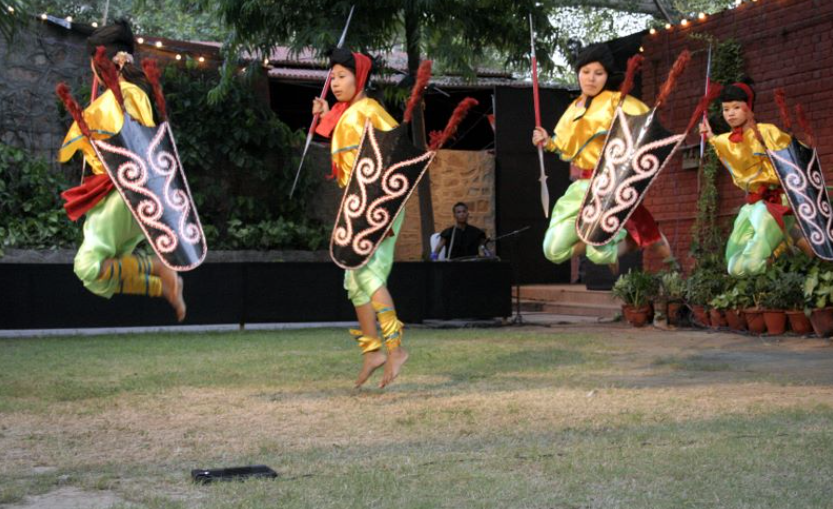Thang-Ta: The ancient martial art from Manipur: The common word for the ancient Manipuri Martial Art known as HUYEN LALLONG is THANG TA. The art sprang out of the war-torn atmosphere of Manipur, a small state in northeast India. It had been an autonomous monarchy since the early Christian era. It played a vital part in the medieval geopolitical climate between India and China. There were numerous separate kingdoms that were in conflict with each other. Constant life-and-death conflicts between clans, tribes, and states resulted in the development of methods. It means protecting the lives of citizen-soldiers while also creating an introspective attitude toward questions of life, death, and the afterlife. Thang-Ta: The ancient martial art from Manipur
Envisioned a profound value system:
The art of fighting envisioned a profound value system or world view entrenched within the culture of tiny ethnic groups striving for survival from continual attack from hostile neighbors while also sustaining a social order based on rank, prestige, and collective kin attachments. The individual was constantly deeply with the community. The ritual served as a continual regenerating action in sync with the flow of the spiritual world of ancestors beyond human existence. Man’s world was an external manifestation of the natural world’s and universe’s inner existence. Thang-Ta: The ancient martial art from Manipur
The use of the body in diverse kinds of expression came from a deep harmony between outside activity and interior impulses.
The art of combat evolved:
When the warlike conflicts ended, the art of combat and the use of weaponry evolved into a system of wielding objective components in organic connection with the universe. So, The body itself transformed into a space where the tensions. The dynamics of creation worked out in a system of movements. Moreover, It also reflected the essence of these creative energies. The entire dynamic universe was within the realm of man’s body.
Roots of thang-ta enshrined in the Meitei: Thang-Ta: The ancient martial art from Manipur
The roots of thang-ta are in the Meitei community’s sacred folklore. The bones and limbs of the Meitei’s progenitor, Tin sidebar (Pakhangba), needed to have transformed into different swords and tools. Some of them got employment in thang-ta and others in specific ceremonies, according to Meitei legend. Tin sidebar’s ribs, became the than Gao (wide sword), while one of his fingers then turned into the Beijing (kitchen knife). However, each of the Meitei’s 7 clans has a conspicuously designed old-style sword. It will get revealed during every predecessor worship event. Pakhangba is the creator of thang-ta in Meitei mythology’s genesis narrative, Leishemlon. Thang-Ta: The ancient martial art from Manipur
Training is rigorous: Thang-Ta: The ancient martial art from Manipur
The training system of thang-ta is rigorous and constrained by tradition. Moreover, The initiation ritual, OjhaBoriba, kicks off training (teacher acceptance). The training site is cleansed and candles are lighted in front of an image of the Pakhangba. Pakhangba was the founder and presiding god of thang-ta, on the auspicious day chosen for the event. The learner is instructed to meditate in front of Pakhangba. They have to do it before bowing and presenting the instructor with a gift of fruit, fabric (typically a khudoi, a locally woven garment worn by males at home), betel leaves, betel nuts, candles, and a small payment (usually one Indian rupee). The instructor accepts the gift and the pupil as a disciple. Moreover, The student begins formal instruction with the teacher that day. In the institutions, there are stringent standards of conduct. Thang-Ta: The ancient martial art from Manipur
Also Read: Physical Fitness and Power Yoga – All You Need to Know
